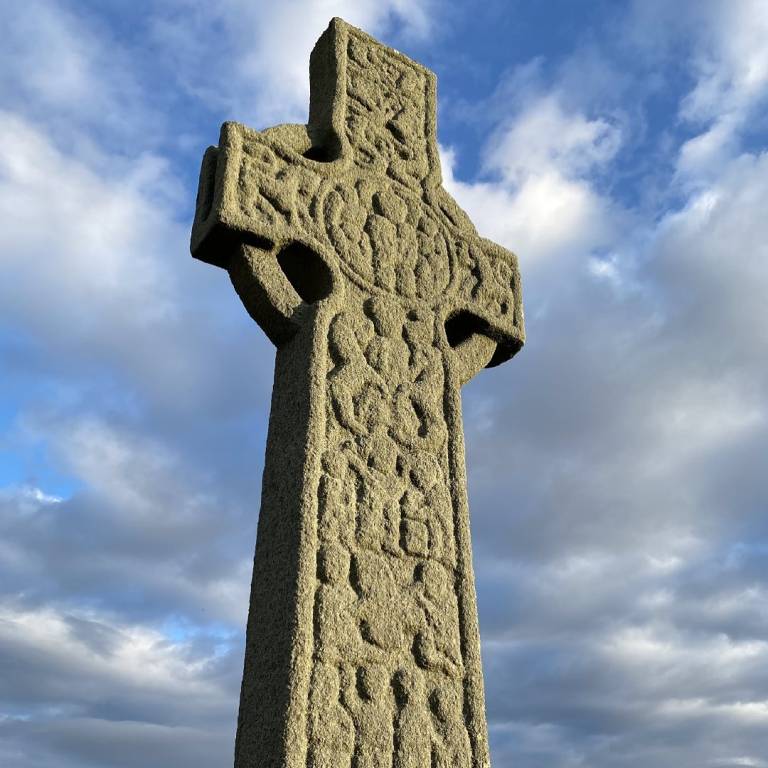Eco-Iconography: The Natural World and Iona’s Early Medieval Sculpture
11 October 2023, 5:30 pm–7:30 pm

This event is free.
Event Information
Open to
- All
Availability
- Yes
Cost
- Free
Organiser
-
Queenie Lee – History of Art
Location
-
IAS Forum, Institute of Advanced Studies (IAS)South WingWilkins BuildingLondonWC1E 6BT
Drawing from eco-phenomenological approaches, my work explores how landscape, time, motion, weather, heavenly bodies, and organisms (both living and dead) are essential components of the iconographic programmes of early medieval monuments. This paper focuses on St Martin’s Cross, which still stands in its original position on the eastern coast of Iona, facing the isle of Mull and the western coast of the British mainland. As possibly the earliest of the ringed monumental crosses that dominated the Insular landscape in the early medieval period, its iconography fully exploits the crosses’ structure and manner in which the stone ring encompasses the animated skies of the Hebrides. My paper argues that the iconographic program of St Martin’s Cross stretches from the scenes carved onto the cross to incorporate the Sound of Iona, mountains of Mull, human remains, and the movement of the moon and sun. To paraphrase from eco-critical literary studies, nature and landscape are protagonists in the narrative rather than mere backdrops. My analysis demonstrates that traditional conceptions of the frame need to be renegotiated not only via Derrida and Kant, but also through medieval Christian conceptions of nature, objects, anatomy and an omnipresent deity.
Location: IAS Forum, Institute of Advanced Studies (IAS), South Wing (Wilkins Building)
About the Speaker
Dr Heather Pulliam
Senior Lecturer in History of Art at University of Edinburgh
Heather Pulliam is a Senior Lecturer at the University of Edinburgh and is currently on a Paul Mellon Senior Fellowship, completing her second monograph, Art and the Living Frame in Early Medieval Britain and Ireland (Cambridge UP) and also co-editing Irish and Scottish Art, c. 900-1900: Survivals and Revivals (Edinburgh UP) with Rachel Moss. Drawing from semiotics, phenomenology, colour theory, and ecology, her work on Insular and Carolingian art has been published in Art Bulletin, Gesta, Medieval Archaeology, and Studies in Iconography. She is also co-investigator on a Leverhulme-supported project with Adam Cohen that explores how the digital humanities might facilitate analysis of the Utrecht Psalter and other medieval psalters.
More about Dr Heather Pulliam Close
Close

